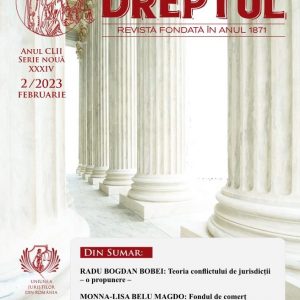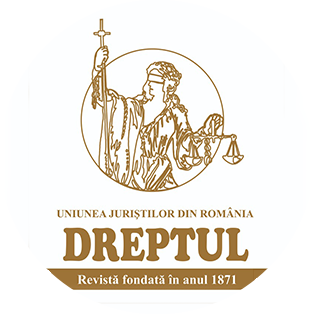-
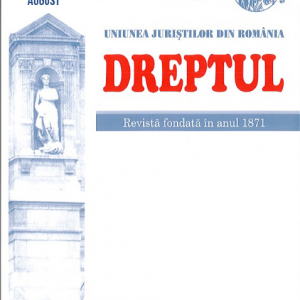 The proposed study is a systematic and systemic analysis of the rules of the Civil Code established for the „possession of status”. While reviving and modernizing the archaic regulations of the Romanian Civil Code of 1864, the present Civil Code establishes the meaning and the content of possession of status, as well as its effects where it is consistent with the data written down in the birth certificate concerning the filiation of the child to the mother. In this context, it is also pointed out the existence of some issues which require normative correlations (even among some paragraphs or sentences within the same article), legal and logical improvements and compatibility adjustments with the general principles of law.
The proposed study is a systematic and systemic analysis of the rules of the Civil Code established for the „possession of status”. While reviving and modernizing the archaic regulations of the Romanian Civil Code of 1864, the present Civil Code establishes the meaning and the content of possession of status, as well as its effects where it is consistent with the data written down in the birth certificate concerning the filiation of the child to the mother. In this context, it is also pointed out the existence of some issues which require normative correlations (even among some paragraphs or sentences within the same article), legal and logical improvements and compatibility adjustments with the general principles of law. -
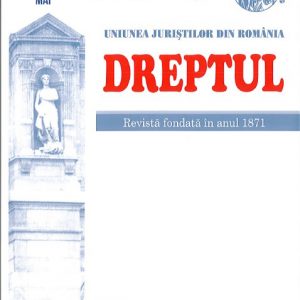 The meanings of the principle of proportionality are identified in the case law and in the legal doctrine during the modern and contemporary period, emphasizing the idea of continuity in understanding this principle. The main connotations of this principle, found in the doctrine, are expressed by the ideas of fairness, balance, adequate ratio, reasonableness, equity, but also in logical plan, by the dialectic reasoning of proportionality. The analysis of case law and of doctrine reveals the importance of this principle, whose purpose is to materialize the legal standard, to substantiate the concept of legitimacy in law and to serve as a key criterion that allows the demarcation between the legitimate manifestations of the state power and, on the other hand, the excess of power in the activity of the state authorities. The only regulations of the Romanian Constitution which specifically refer to the principle of proportionality are included in Article 53, with the marginal title „Restriction of the exercise of some rights and freedoms”. In this study, by using different ways of legal interpretation, we also identify other constitutional rules which involve this principle.
The meanings of the principle of proportionality are identified in the case law and in the legal doctrine during the modern and contemporary period, emphasizing the idea of continuity in understanding this principle. The main connotations of this principle, found in the doctrine, are expressed by the ideas of fairness, balance, adequate ratio, reasonableness, equity, but also in logical plan, by the dialectic reasoning of proportionality. The analysis of case law and of doctrine reveals the importance of this principle, whose purpose is to materialize the legal standard, to substantiate the concept of legitimacy in law and to serve as a key criterion that allows the demarcation between the legitimate manifestations of the state power and, on the other hand, the excess of power in the activity of the state authorities. The only regulations of the Romanian Constitution which specifically refer to the principle of proportionality are included in Article 53, with the marginal title „Restriction of the exercise of some rights and freedoms”. In this study, by using different ways of legal interpretation, we also identify other constitutional rules which involve this principle. -
 This study aims to identify ways to reflect in the special law (Law no. 72/ 2013) some genuine civil law guiding ideas, lato sensu, and some principles applicable to the relationships between professionals, but also the extent to which the application of these principles to the cases envisaged by the legislator in the special regulation referred contributes to the purpose of the law concerned.
This study aims to identify ways to reflect in the special law (Law no. 72/ 2013) some genuine civil law guiding ideas, lato sensu, and some principles applicable to the relationships between professionals, but also the extent to which the application of these principles to the cases envisaged by the legislator in the special regulation referred contributes to the purpose of the law concerned. -
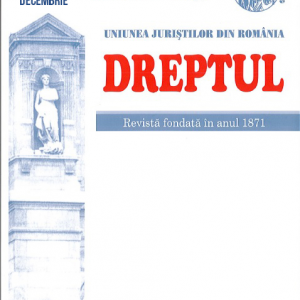 Potrivit art. XXIV alin. (1) din Legea nr. 202/2010, numai hotãrârile pronunțate înainte de data intrãrii în vigoare a acestei legi rãmân supuse cãilor de atac, motivelor și termenelor prevãzute de legea sub care a început procesul; prin urmare, hotãrârile pronunțate ulterior intrãrii în vigoare a Legii nr. 202/2010 sunt supuse cãilor de atac, motivelor și termenelor prevãzute de dispozițiile Codului de procedurã penalã, astfel cum au fost modificate prin aceastã lege. Conform alin. (2) al aceluiași articol, „Procesele în curs de judecatã la data schimbãrii competenței instanțelor legal învestite vor continua sã fie judecate de acele instanțe, dispozițiile referitoare la competența instanțelor din Codul de procedurã penalã, republicat, cu modificãrile si completãrile ulterioare, precum și cu cele aduse prin prezenta lege, aplicându-se numai cauzelor cu care instanțele au fost sesizate dupã intrarea în vigoare a prezentei legi”.
Potrivit art. XXIV alin. (1) din Legea nr. 202/2010, numai hotãrârile pronunțate înainte de data intrãrii în vigoare a acestei legi rãmân supuse cãilor de atac, motivelor și termenelor prevãzute de legea sub care a început procesul; prin urmare, hotãrârile pronunțate ulterior intrãrii în vigoare a Legii nr. 202/2010 sunt supuse cãilor de atac, motivelor și termenelor prevãzute de dispozițiile Codului de procedurã penalã, astfel cum au fost modificate prin aceastã lege. Conform alin. (2) al aceluiași articol, „Procesele în curs de judecatã la data schimbãrii competenței instanțelor legal învestite vor continua sã fie judecate de acele instanțe, dispozițiile referitoare la competența instanțelor din Codul de procedurã penalã, republicat, cu modificãrile si completãrile ulterioare, precum și cu cele aduse prin prezenta lege, aplicându-se numai cauzelor cu care instanțele au fost sesizate dupã intrarea în vigoare a prezentei legi”. -
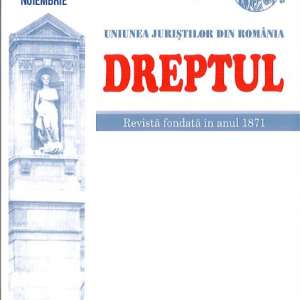 În arhitectura reformei judiciare legislative în materie penală, data de 1 februarie 2014 este marcată de intrarea în vigoare a Codului penal și a Codului de procedură penală, care prin noile dispoziții conferă o nouă filosofie multor instituții de drept substanțial și procedural penal. Această concluzie este susținută de expunerile de motive la cele două coduri, care în mod concret explică intenția legiuitorului de a reglementa instituțiile modificate sau nou introduse, realizându-se un proces de armonizare atât cu legislația, cât și cu jurisprudența internațională și europeană.
În arhitectura reformei judiciare legislative în materie penală, data de 1 februarie 2014 este marcată de intrarea în vigoare a Codului penal și a Codului de procedură penală, care prin noile dispoziții conferă o nouă filosofie multor instituții de drept substanțial și procedural penal. Această concluzie este susținută de expunerile de motive la cele două coduri, care în mod concret explică intenția legiuitorului de a reglementa instituțiile modificate sau nou introduse, realizându-se un proces de armonizare atât cu legislația, cât și cu jurisprudența internațională și europeană. -
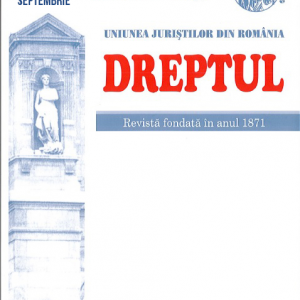 The excessive activity of the criminal trial-related law in the case of transient situations can ensure the predictable nature of law and the elimination of the cases when the parties are harmed by the limitation of the mechanisms of redress. The reporting of the implementation of the criminal trial-related law regarding hearings and mechanisms of redress upon the court’s notification provides to the parties sufficient prediction as regards the knowledge of such hearings and mechanisms of redress since the initial moment of the judgment phase. The author appreciates that such an approach in the law implementing the new Criminal Procedure Code would ensure an efficient transition from the old criminal trial-related law to the new criminal trial-related law.
The excessive activity of the criminal trial-related law in the case of transient situations can ensure the predictable nature of law and the elimination of the cases when the parties are harmed by the limitation of the mechanisms of redress. The reporting of the implementation of the criminal trial-related law regarding hearings and mechanisms of redress upon the court’s notification provides to the parties sufficient prediction as regards the knowledge of such hearings and mechanisms of redress since the initial moment of the judgment phase. The author appreciates that such an approach in the law implementing the new Criminal Procedure Code would ensure an efficient transition from the old criminal trial-related law to the new criminal trial-related law. -
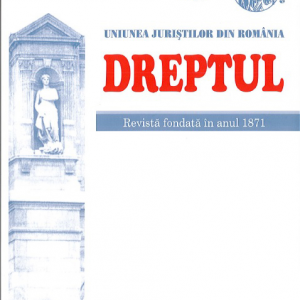 Atunci când se instituie măsuri asigurătorii în procesul penal nu este necesar să se indice sau să se dovedească ori să se individualizeze bunurile asupra cărora se înființează măsura asiguratorie. (Înalta Curte de Casație și Justiție, Completul pentru dezlegarea unor chestiuni de drept, Decizia nr. 19/2017 – cu notă critică)
Atunci când se instituie măsuri asigurătorii în procesul penal nu este necesar să se indice sau să se dovedească ori să se individualizeze bunurile asupra cărora se înființează măsura asiguratorie. (Înalta Curte de Casație și Justiție, Completul pentru dezlegarea unor chestiuni de drept, Decizia nr. 19/2017 – cu notă critică) -
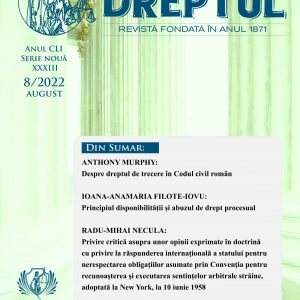
-
 The failure to fulfill the periodical financial or fiscal obligation consisting in source withdrawal taxes or contributions was qualified in time by certain authors, as a continued crime, and by others, as a successive continuous crime. Choosing the last version, the author of this study identified several criteria for making a distinction between the two forms of crime.
The failure to fulfill the periodical financial or fiscal obligation consisting in source withdrawal taxes or contributions was qualified in time by certain authors, as a continued crime, and by others, as a successive continuous crime. Choosing the last version, the author of this study identified several criteria for making a distinction between the two forms of crime. -
 The emergence of Decree-Law no. 24/1990 led to conflicting interpretations on the period of application, with no specific provisions in this respect. This prompted the article’s author to appeal to the general principles of criminal law in interpreting the law hereby.
The emergence of Decree-Law no. 24/1990 led to conflicting interpretations on the period of application, with no specific provisions in this respect. This prompted the article’s author to appeal to the general principles of criminal law in interpreting the law hereby. -
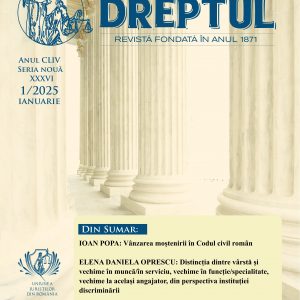
-
